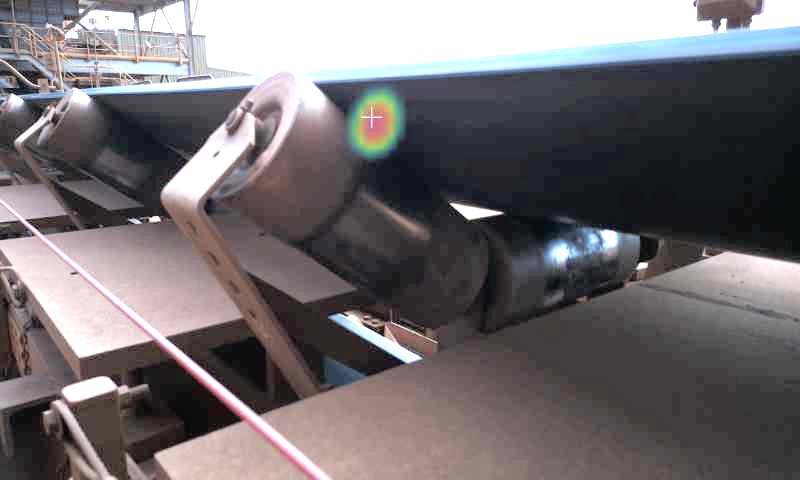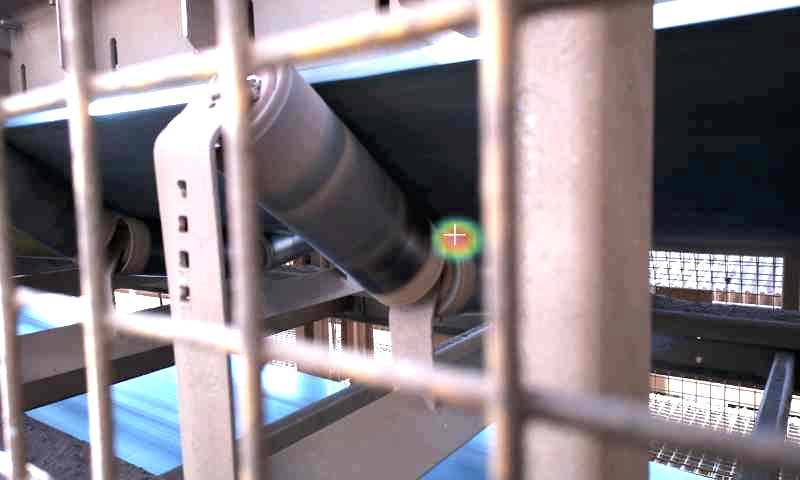Flir provides Early Warning Signs of Conveyor Belt Bearing Problems
It is reported that when Sir John Barbirolli was once conducting the world-famous Halle orchestra in Manchester during a rehearsal, he shouted at the top of his voice…” where’s the piccolo?”.
www.flir.com

A tiny instrument that the player obviously thought would go unnoticed amongst the ensemble of large, loud instruments. A salutary lesson on how a single seemingly insignificant element can affect the entire performance.
Stories like this resonate in industry too. Major manufacturing complexes often contain thousands of industrial components such as hydraulic pumps and industrial gearboxes. Some of these may seem like unimportant ancillary pieces of equipment but they are often vital to production and can bring the whole complex to a grinding halt when they fail.
A good example of this is a quarry where the mined aggregate is conveyed to a ship or loading point through a series of conveyor belts. The belts themselves are driven by electric motors utilizing gearboxes with each conveyor containing a multitude of roller bearings that support the belt itself as the aggregate is transported to its destination.

These conveyers can sometimes cover huge distances. Take the conveyer belt system between the Mount Saddleback mine and Worsley refinery near Collie, Western Australia, the 31 kilometre flight of the main conveyor is the longest single conveyor belt in the world. The total distance of the complete conveyor system is an incredible 51 kilometres (31.6 miles). It is used to transport 2,700 metric tonnes of bauxite ore per year, from which aluminium is produced. The roller bearings supporting the long belts may seem insignificant elements when compared to huge crushers, graders, screens and major parts of the overall process, and yet if a number of these bearings seize or fail, then the entire production can come to a halt.
Potential failures of these bearings can be identified utilizing thermal imaging cameras, a technique that has been successfully used for many years, saving millions in terms of lost production and catastrophic failure. However, a more recent approach is to utilize acoustic imaging cameras which can provide a much earlier warning signal when it comes to bearing failures.
The latest FLIR Si2 LD acoustic imaging camera has different operation modes, firstly the leak detection mode (LD) that is used for detecting minute gas and air leaks in pneumatic, vacuum or speciality gas systems. Secondly, Mech Mode which can detect mechanical problems with bearings and gears way before they fail. This early warning tool is easy and quick to use meaning that even long conveyor belts with hundreds of support bearings can be analysed very quickly on a regular basis providing an in-depth health check and an early warning system, hence potentially avoiding expensive downtime.

The FLIR Si2-Pro acoustic imaging camera comes loaded with a multitude of additional features. The improved performance means the new camera is capable of detecting problems at much greater distances. It shows a 70% improvement in acoustic performance compared to previous Si124 models. The camera is therefore more adapt at detecting multiple mechanical sources thanks to the improved multisource mode.
The camera features a 2x and 8x digital zoom which provides images to the 5 inch colour touch screen which boasts a resolution of 1280 x 720 for both video and images with GPS, image tags and comments potentially added to images for further analysis to be conducted. Still images can be produced with both .nlz and .jpg format whilst videos can be formatted in .nlz. Data transfer can be conducted via Wi-Fi or USB with automatic over the air wireless updates ensure the camera is always up to date. Measurement data can be stored on the internal SD card up to 128GB with unlimited cloud storage available with FLIR Cloud.
Weather detecting developing faults in high-voltage applications, leaks from pneumatic equipment or speciality gas installations; or mechanical issues such as bearings in conveyors, the FLIR Si2-series of cameras can provide the insights needed to maintain uptime and reduce operational expenditure.
www.flir.com

